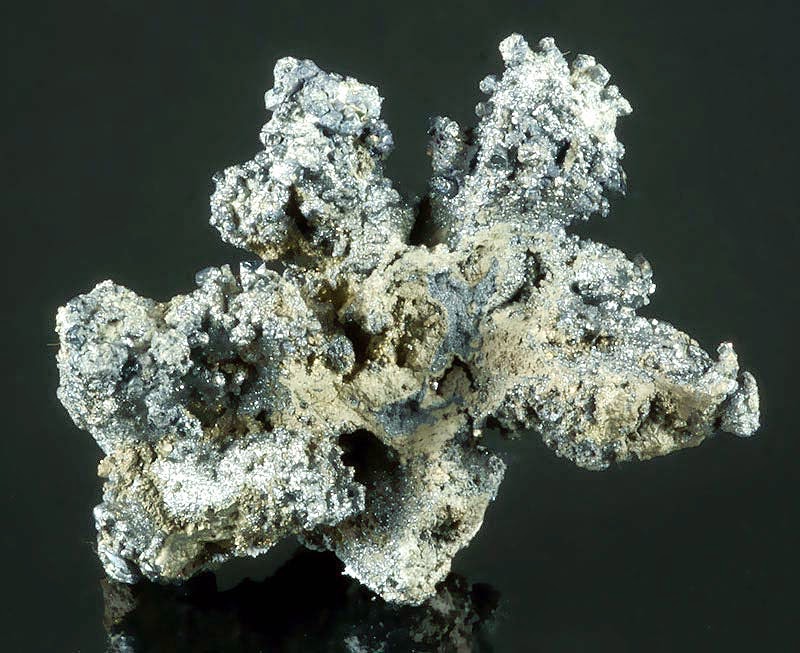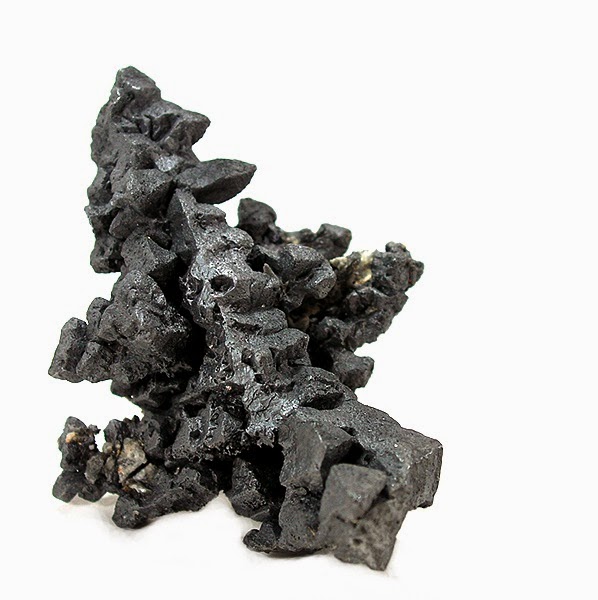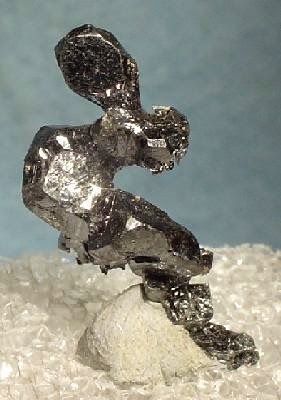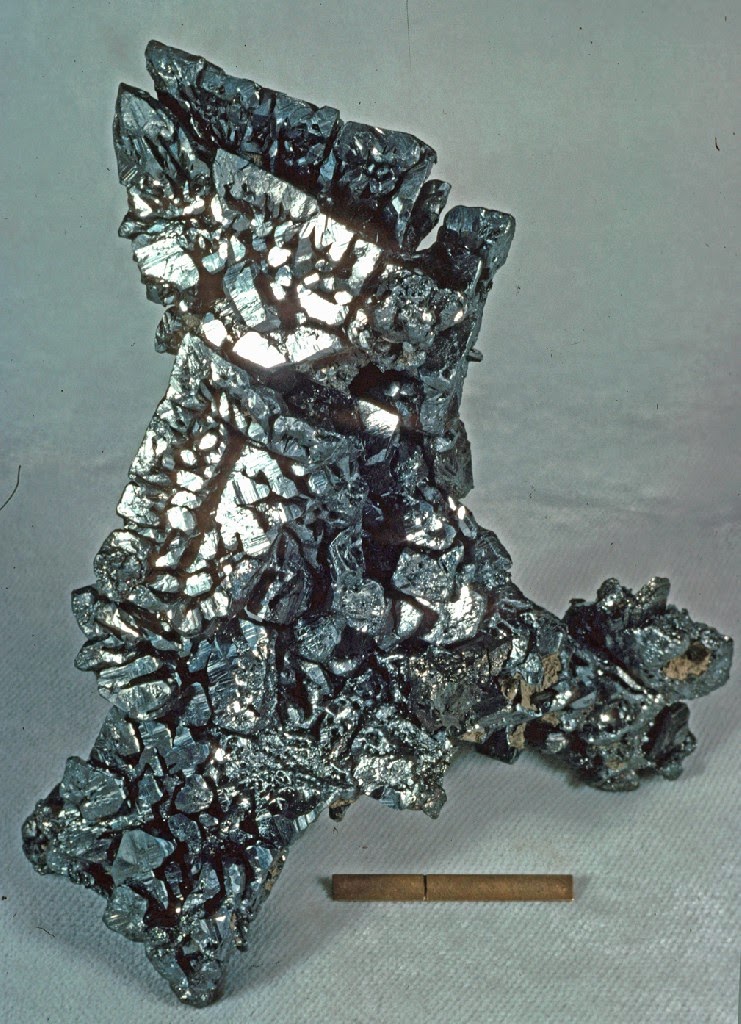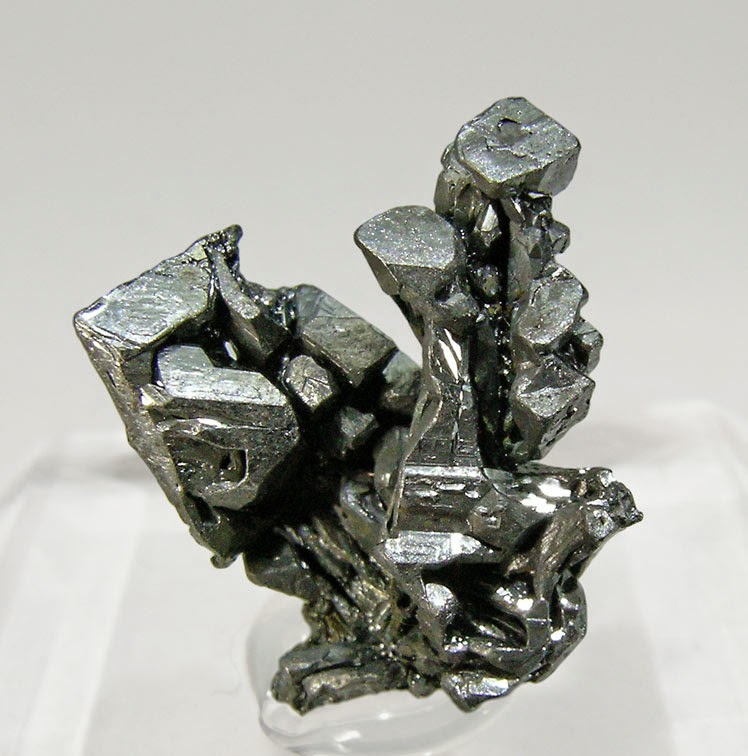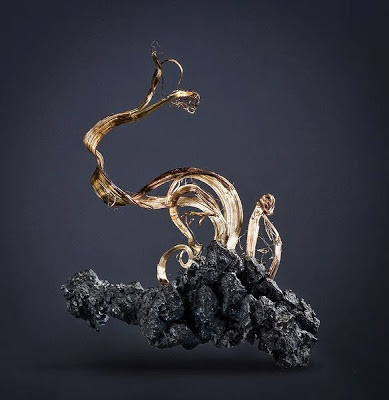
Chemical Formula: Ag2S
Locality: Freiberg, Schneeberg, Annaberg, Germany.
Name Origin: From the Greek, akanta, meaning “arrow.” After the Latin, argentum, meaning “silver”. Argentite is stable above 179 C. Acanthite is stable below 179 deg. C.
Acanthite, Ag2S, crystallizes in the monoclinic system and is the stable form of silver sulfide below 173 °C. Argentite is the stable form above that temperature. As argentite cools below that temperature its cubic form is distorted to the monoclinic form of acanthite. Below 173 °C acanthite forms directly. Acanthite is the only stable form in normal air temperature.
Occurrence
Acanthite is a common silver mineral in moderately low-temperature hydrothermal veins and in zones of supergene enrichment. It occurs in association with native silver, pyrargyrite, proustite, polybasite, stephanite, aguilarite, galena, chalcopyrite, sphalerite, calcite and quartz.
Acanthite was first described in 1855 for an occurrence in the Jáchymov (St Joachimsthal) District, Krušné Hory Mts (Erzgebirge), Karlovy Vary Region, Bohemia, Czech Republic. The name is from the Greek “akantha” meaning thorn or arrow, in reference to its crystal shape.
Physical Properties
Cleavage: {001} Poor, {110} Poor
Color: Lead gray, Gray, Iron black.
Density: 7.2 – 7.4, Average = 7.3
Diaphaneity: Opaque
Fracture: Sectile – Curved shavings or scrapings produced by a knife blade, (e.g. graphite).
Hardness: 2-2.5 – Gypsum-Finger Nail
Luminescence: Non-fluorescent.
Luster: Metallic
Magnetism: Nonmagnetic
Streak: shining black
Photos:
